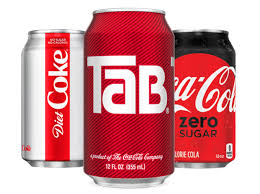
This month, the Coca-Cola Company announced that it will eliminate almost half of its 500 brands to ensure room for future offerings. This includes the elimination of Tab, the industry’s first diet cola which now occupies less than a one percent share of the soft drink market. Why has it taken Coke so long to make this move considering the successes of Diet Coke and Coke Zero?
The irony of Coke’s decision to trim its portfolio is the opposite of what is currently happening within the beer industry. Not a day goes by without an announcement of a joint venture between a major beer supplier and another non-beer beverage company. It seems there is a rush-to-market by many suppliers within the beer industry to expand and develop new products. Even more unique about these deals is that the JVs are frequently with a major vendor, where in the past, many non-ALCs simply worked a deal with the beer network. Typically, many of those arrangements ended poorly with the vendor leaving the beer network hanging. Now that arrangements are executed directly with the breweries, the wholesalers have an added sense of security and contract protection tied to the breweries. Such arrangements are a game-changer for wholesalers.
In addition to the various JVs, the industry should take a step back and look at what more the breweries are doing. The breweries themselves are creating teams of professionals who are executing the expansion of new products, many, though not all of which are line extensions. Something will have to give in the middle tier. How will wholesalers structure their companies to handle this volume expansion? Can, or will, wholesalers create departments, divisions, or teams to market and develop all the new products? Will it hurt their core business?
Reyes, Columbia, Glazer’s, BEK, L&F, and others have the funding and structure in place to go to market with the new products. Other medium and smaller wholesalers, however, might not, or cannot structure their companies to accommodate the increased volume. Some major brewers, once lagging in new products, are now offering a slew of new or JV products and pundits are asking if it is too much.
Before Covid-19, the industry had started a slow and methodical move from beer to beverage companies. While that transition had been evolving over time, the virus expediated the shift. It is no secret that many wholesalers have reduced or eliminated suppliers, brands, and SKUs during this time, and many crafts have simply gone out of business or been reduced to strictly brew pub status to remain in business.
It is impossible to project how the beer industry will look in the future, but one thing is certain, it will certainly not be your father’s beer business!
We really cannot forecast that well, and yet we pretend that we can. But we really cannot.
Leave a Reply